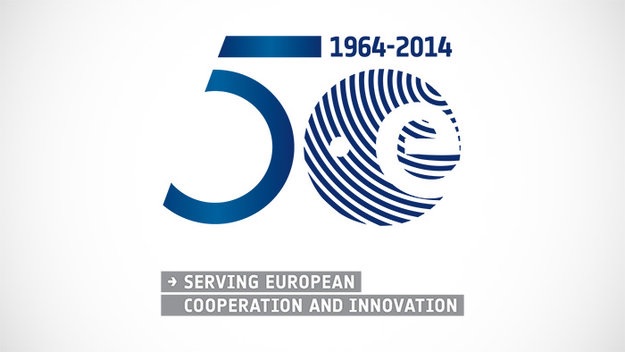From NASA/ESA Hubble Telescope
Antonella Nota
ESA HST Project Scientist, STScI
Email: hubblenewseurope@stsci.edu
From the desk of the ESA Hubble and JWST Project Scientist
So many important events on the Hubble front in the last few months! First, we all are thankful that Hubble returned to normal operations, with three well functioning gyros. Gyros provide key information to the complex system that Hubble uses to point to and observe your favorite target.
So when Gyro 2 failed on 27 October a collective sigh was heard.
Gyro 2 had been misbehaving for several months, so its departure was not unexpected. What was unexpected, though, was Gyro 3’s strange behavior when it was brought online to complete the trio. You can read here the story, why Hubble was kept offline for several days, and how we managed to get a happy ending after all. Now that Hubble has resumed nominal operations, we are grateful to the super-dedicated operation team at Goddard Space Flight Center and at STScI, where engineers and scientists worked closely together to make sure that our favorite telescope was safe and could be returned to work as soon as possible to make new scientific discoveries. With the problem being solved Hubble is expected to still be a fully functioning and productive observatory well into 2025, to overlap a couple of years with JWST.
At the same time as the gyro story unfolded, the Time Allocation Committee was meeting in Baltimore, to assess the medium and large proposals received in response to the Cycle 26 call. This time no small proposals were allowed, as these had already been accepted in large numbers in last summer. Read here about some highlights from the time allocation process, and the first impressions from the proposal anonymisation, which seems to have stopped the bias trend noticed in previous years. The large majority of panel members and chairs also gave very positive feedback on the ability to focus only on the science merits of each proposals.
On the archive front, there is another reason to celebrate: the European Hubble archive at ESAC – the eHST – is now and officially a full mirror of the Hubble Archive at STScI. Read here about the successful conclusion of a tightly woven collaboration between STScI, ESAC and CADC that now delivers Hubble data from three locations, in the US, Canada and Europe.
sci18006 — Announcement
A new Hubble Archive mirror in Europe
17 December 2018
In June 2018 a new mirror of the Hubble archive at STScI was opened to the public in Europe. Hosted at the ESAC Science Data Centre (ESDC) in the European Space Astronomy Centre (ESAC) near Madrid, this represents the culmination of almost two years of effort by scientists and engineers from the ESDC, the Space Telescope Science Institute (STScI), and the Canadian Astronomy Data Centre (CADC). These three partners worked together within the Hubble Space Telescope Consolidation of Pipelines project to ensure that the Hubble archives at all three data centres share a common data model and the exact same data products. ESA’s Hubble archive has been re-engineered in order to accommodate this ultimate change with minimum impact for its users.
As a result, ESA’s new Hubble Space Telescope Science Archive (eHST) now provides access to exactly the same data as the Mikulski Archive for Space Telescopes (MAST) at STScI. Prior versions of this archive hosted locally reprocessed data products, so from version 2.0 users can be confident that products downloaded from eHST are identical to those in MAST and at the Canadian Astronomy Data Centre (CADC). In addition, users may also benefit from the eHST’s user-friendly interface and advanced functionalities, including Virtual Observatory (VO) interoperability protocols, as well as the option to query the archive via a simple and well-documented command-line interface.
The eHST has been developed following the common approach within the ESDC, leading to a more robust archive, easy to maintain and to extend. This allows users to exploit all the Hubble science archive data collections in many flavours, visualise the Hubble Source Catalog on top of the images and explore them more globally from a multi-wavelength point of view in ESASky.
The current collection contains all public standard-processed data from the active Hubble instruments (ACS, COS, STIS, WFC3) and from the legacy instruments (FOC, FOS, HRS, NICMOS, WFPC, WFPC2). Access to the Hubble Source Catalogue (v2.1) is available too. Plans for the near future include extending to the eHST the splendid Hubble data treasury available for the scientific community.
If you have any question or suggestion for how to make these data services more useful or engaging to both scientists and citizens in general, please contact the eHST helpdesk at hsthelp@sciops.esa.int.
Finally, to the community of actively engaged Hubble users: we want to hear from you! Help us make the science newsletter most useful and informative to you! Tell us what you want to know, tell us what you like and what we can improve. For 2019, we are planning to continue covering JWST, as well as Hubble, and include more of your science. Send us your feedback at HubbleNewsEurope@stsci.edu.
And, do enjoy a restful and peaceful holiday break.
From the entire ESA/Hubble team, Happy Holidays to all!
See the full article here .

five-ways-keep-your-child-safe-school-shootings
Please help promote STEM in your local schools.
The Hubble Space Telescope is a project of international cooperation between NASA and the European Space Agency. NASA’s Goddard Space Flight Center manages the telescope. The Space Telescope Science Institute (STScI), is a free-standing science center, located on the campus of The Johns Hopkins University and operated by the Association of Universities for Research in Astronomy (AURA) for NASA, conducts Hubble science operations.




